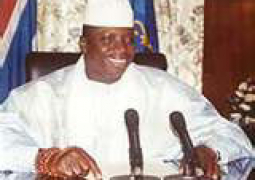The
evolution of the music called Jazz came in progression. It all started with the
slave songs which developed into the Blues and then came into confluence with
the sound of the Marching Bands to create new music that is all encompassing,
diverse and full of quality. The progression of the music from the swing era
with ragtime, to modern jazz, announced the arrival of jazz musicians who were
modernist in their approach to music and served as daring exponents of the new
and bold. Jazz music is all about creativity, innovation and talent. Very
often, connections are drawn between Jazz and African music, but it is
important to note that the griots of West Africa aimed to preserve their
musical tradition as it is handed down to them. This is not a mere aesthetic
choice, but a cultural imperative. The griots are the historians of society and
must maintain the integrity of their precious musical heritage. Such an attitude
defies casual experimentation and any modification in the music is viewed as a
risky act, never encouraged and at best tolerated with anxiety and distrust.
The concept of progress plays a very modest role in most ethnic music, but in
the world of Jazz progress is always being sought and innovation is the order
of the day.
Almost
from the very beginning, jazz players embraced a different mandate, accepting
their role as entertainers while pursuing experimentation with an ardent zeal.
This created a paradoxical foundation for Jazz which is still as relevant
today; for the jazz musician proved to be a restless soul, at one moment
fostering the tradition just like the West African griot, at another shattering
it, mindless of the pieces. It is interesting to note that this progressive
attitude among early jazz players came from America’s most disempowered
underclass. We would like to recall that this music was not accepted by the
ruling class and was often belittled and derided even within the ranks of the black
community. In light of this hostility, the task of preserving the African
American vernacular music heritage would seem difficult to achieve, but to have
advanced the jazz idiom to produce an Ellington or an Armstrong was truly a
major accomplishment, taking into account that all this happened in the span of
one generation bringing about a rapid and dramatic transformation from folk
music to art music.
This
was simply an extension of jazz’s inherent tendency to mutate, to change and
grow. As early as 1931, journalist were comparing Ellington to Stravinsky and a
few years later, Benny Goodman was making a more overt attempt to affiliate
himself with contemporary classical music. Other modernist leanings surfaced
with the likes of Art Tatum and Coleman Hawkins. The irony of modern jazz is
that it did not spring from none of these roots. Although it drew bits and
pieces of inspiration from all these developments, the leading jazz modernist
of the 40’s developed their own unique style, brash and unapologetic, in
backrooms, after hour clubs and jam sessions. Modern jazz or bebop as it soon
came to be called, rebelled against the popular trappings of swing music and
brought about a radical change of how traditional jazz instruments were played.
The boppers were not formalist; they were preoccupied with content and not form
with instrumental solos being at the heart of each performance. The
individualism of beboppers was fired further by the fact that those who were
involved in this progression were African Americans who were marginalized at a
critical juncture in U. S history.
The
first generation of jazz players had succeeded as entertainers, and white
America was content with that, and celebrated them on that level. However, the
black jazz players of the 40’s wanted more. They demanded acceptance as artists
and esteemed practitioners of a serious musical form. The birth of modern jazz
emerged at a strange crossroads: drawing on one side from the roots and rhythms
of Kansas City jazz and while delving into the atmosphere of high art. One of
the leading exponents of modern jazz was a guy called Charlie Parker.
He
was born in Kansas City, Kansas, but raised in Kansas City Missouri. He
attended Lincoln High School where at the age of fourteen, he joined the school
band, using a rented instrument to practice. He is a saxophonist and composer.
In the 1930’s, Parker began to practice diligently and mastered the art of
improvisation which lead to the development of some of the ideas that led to
bebop. He once told an interviewer that he spent about 3 to 4 years practicing
up to 15 hours a day. Bands led by Count Bassie and Bennie Moten greatly
influenced his musical direction, and he would play with local bands in jazz
clubs around Kansas City, Missouri, taking time to perfect his technique with
the assistance of a musician called Buster Smith. In 1938, Parker joined
pianist Jay McShann’s Terriitory Band and toured nightclubs and other venues of
the southwest, as well as Chicago and New York City. His professional recording
debut began with McShann’s band.
As
a teenager, Parker developed an addiction to morphine while in hospital after
an automobile accident. He acquired the nickname “Yardbird” early in his
carrier which inspired the titles of a number of his compositions, such as
“Yardbird Suite”. He was an icon for the subculture generation and was seen as
an uncompromising artist and intellectual rather than just an entertainer. In
1939 Parker moved to New York City to pursue a carrier in music where he met
the likes of Art Tatum, Earl Hines and Dizzy Gillespie joining them at jam
sessions whenever possible. He joined a group of young musicians and played in
after hour clubs in Harlem with an attitude that demonstrated their interest to
“play music that white bandleaders could not play”.
Early
in its development, this new type of music was rejected by many of the
established traditional jazz musicians who disdained their younger
counterparts. During the mid-forties, much of bebop’s early development was not
captured for posterity. It was not until 1945 that Parker’s collaborations with
Dizzy Gillespie and Max Roach began to hit the airwaves and made an impact on
the jazz world. On November 1945, Parker led a record date for the Savoy label,
recording as Charlie Parker’s Reboppers, the record was marketed as the
“greatest jazz session ever.” In November 1949, Norman Granz arranged for
Parker to record an album of ballads with a mixed group of jazz and chamber
orchestra musicians. The releases from these sessions included “Charlie Parker
with Strings”, “Just Friends” and “Everything Happens to Me”.
Parker’s
associated acts are with Miles Davis and Max Roach. His musical carrier was
short-lived because of his addiction to heroin which also caused him to miss
many gigs and lose work. He finally succumbed to this condition and died in
March 1955. He leaves a legacy rich with quality and a whole generation of
musicians still trying to emulate his style. The life of Charlie Parker cannot
be captured in full here, but we featured him only to show his pivotal role in
the development of Modern Jazz.



